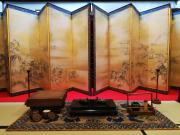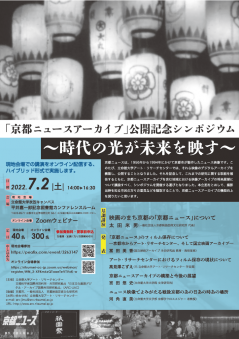-
 13
14
15
16
17
18
19
20
21
22
23
13
14
15
16
17
18
19
20
21
22
23

8月8日、松竹大谷図書館の「松竹大谷図書館所蔵・芝居番付検索閲覧システム」で戦前の歌舞伎座の演目が公開されたことが、東京新聞に掲載されました。(松竹大谷図書館所蔵・芝居番付検索閲覧システム).
2022年度ARC-iJAC事業の一環として、松竹大谷図書館とアート・リサーチ・センター(ARC)の協定に基づき 松竹大谷図書館の「松竹大谷図書館所蔵・芝居番付検索閲覧システム」に統合され、ARCが開発・公開いたしました。
松竹大谷図書館所蔵・芝居番付検索閲覧システム
< https://www.dh-jac.net/db1/ban/search_shochiku.php?enter=shochiku&lang=jp >3rd Online Summer Programme in Japanese Cultural Studies: "Tourism and Heritage in Post-Lockdown Japan", 1 - 12 August 2022 / <Applications now closed.>
Organized by the Centre for Japanese Studies at the University of East Anglia and the Sainsbury Institute for the Study of Japanese Arts and Cultures (SISJAC) in partnership with Toshiba International Foundation and the Art Research Center (ARC), Ritsumeikan University, the 2022 Online Summer Programme in Japanese Cultural Studies will be held online from August 1 to August 12.
This programme is free for all attendees, requiring no prior training in Japanese or Japanese Studies. Now in its third year, the programme was conceived as a temporary replacement for in-person summer schools, which were prevented due to the Coronavirus pandemic. However, the programme has attracted incredible interest from across the globe, demonstrating a strong appetite for Japanese Studies internationally.
This edition of the programme considers directly the impacts of the Coronavirus on Japan. The curriculum will be based around the theme of "Tourism and Heritage in Post-Lockdown Japan". Throughout the world, tourism has been one of the industries most profoundly affected by the pandemic. For Japan in particular, which has sought to become a "Tourism Nation" and was host for the 2020 Summer Olympics and Paralympic Games, the consequences have been significant. At the time of this announcement, while Japan has begun to gradually open to overseas tourists, the strict tour group system is a far cry from the experiences of the 34 million who visited in 2019. It therefore seems appropriate that we take this time to reconnect with Japan and explore what tourism in Japan will mean post-COVID-19. We will also consider Japan's cultural heritage, too, and how COVID-19 has affected the heritage industry, exploring the uses and value of heritage in the absence of international tourism. Over the two-week period, we will be joined by world-leading scholars, practitioners, and industry professionals based in Japan.
No prior knowledge of these fields is necessary, and with the variety of topics and interests represented by our speakers, we hope that there is something for specialists and non-specialists alike.
Over two weeks, we will be holding panels with experts based in Tokyo, Kyoto and Fukuoka to discuss "Responding to Tourist Practices", "Heritage Without Tourism" and "Local Heritage, Global Heritage":
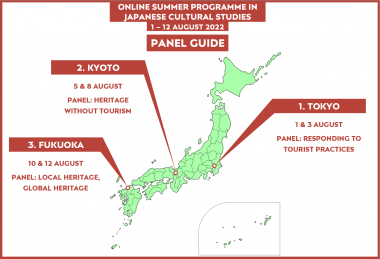 In addition to live virtual talks, participants will also have the opportunity to engage in asynchronous activities, join networking sessions, and will be issued a Certificate of Participation on completion of the programme. Participation is free of charge.
In addition to live virtual talks, participants will also have the opportunity to engage in asynchronous activities, join networking sessions, and will be issued a Certificate of Participation on completion of the programme. Participation is free of charge.Deadline for applications: Thursday 30th June 2022 (Applications now closed.)
For more details, please visit: https://japaninnorwich.org/2022/05/31/tifo-osp-22-applications/
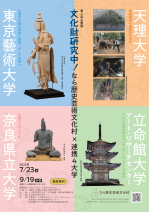 なら歴史芸術文化村と立命館大学アート・リサーチセンター(ARC)は、研究連携協定に基づき、ARCの田中覚教授(情報理工学部)を中心に、国宝・當麻寺のデジタルアーカイブ化と三次元計測可視化プロジェクトを実施しています。
なら歴史芸術文化村と立命館大学アート・リサーチセンター(ARC)は、研究連携協定に基づき、ARCの田中覚教授(情報理工学部)を中心に、国宝・當麻寺のデジタルアーカイブ化と三次元計測可視化プロジェクトを実施しています。
連携協定を結んでいる他3大学(天理大学、奈良県立大学、東京藝術大学)の特徴的な文化財研究の実践や各研究室の最新研究の事例、取り組みの成果を模型や映像などを通してわかりやすく紹介します。「文化財研究中!ーなら歴史芸術文化村×連携4大学ー」開催について
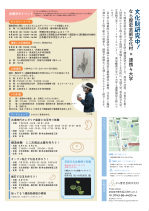
- 開催期間:2022年7月23日(土)〜9月19日(月・祝)
- 時 間:9時~17時(入館は16時30分まで)
- 場 所:なら歴史芸術文化村 文化財修復・展示棟 地下1階展示室
- 料 金:無料
- 主 催:なら歴史芸術文化村
- 共 催:天理大学、立命館大学アート・リサーチセンター、奈良県立大学地域創造研究センター、東京藝術大学 文化財保存学保存修復彫刻研究室
2022年7月14日~7月16日
長江家住宅での「屏風祭」3年ぶりの一般公開
「旅」をテーマに、屏風や絵巻物、映像資料などを展示いたしました。立命館大学と株式会社フージャースホールディングスは、京都市指定有形文化財・長江家住宅で屏風祭を3年ぶりに一般公開いたしました。本企画は、長江家住宅の保全と活用、教育・研究の振興・発展に関する事項等について、両者が相互に連携協力することを内容とした覚書(2015年5月27日締結)に基づくものです。
祇園祭では、宵山の期間に山鉾町周辺の旧家や老舗がミセの間を屏風や嗜好品などで飾りたてる習慣があり、屏風祭と呼ばれています。長江家住宅では、長江家旧蔵品を所有する立命館大学と連携し、祇園祭の前祭山鉾巡行の宵山期間(7月14日~16日)に屏風祭を行い、一般公開していました。今年は、「旅」をテーマに、立命館大学文学部で京町屋の文化や歴史を学ぶ学生がセレクトした屏風や絵巻物、映像資料などの展示を行いました。
【展示品】
・「春夏秋冬山水屏風」谷口靄山
・「和歌の浦」川北露峰
・「唐子遊戯図屏風」作者不明
・「東海道五十三次漫画絵巻」岡本一平ら13人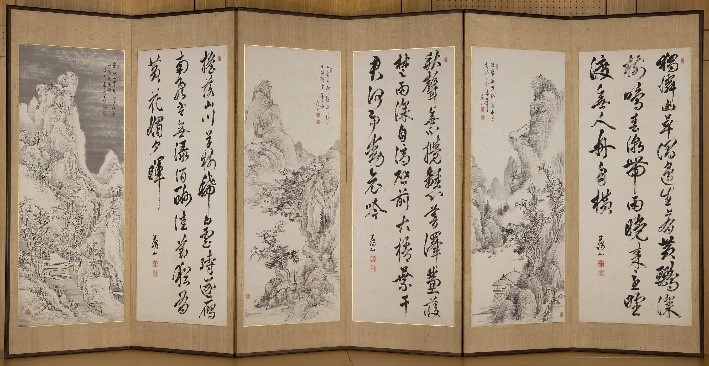
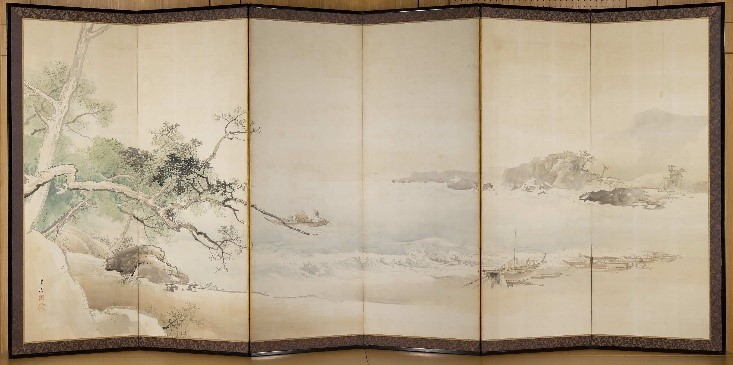
「春夏秋冬山水屏風」谷口靄山 「和歌の浦」川北露峰 会 期: 2022年7月14日(木)~7月16日(土) 会 場: 京都市指定有形文化財 長江家住宅 主屋南棟(京都市下京区新町通仏光寺上ル394) 開館時間: 10:00~19:00(最終受付18:30)
※15日のみ18:00~19:00は貸切予約のためご見学できません。見 学 料 : 700円 (当住宅の保全・修繕に使用します) ※ご予約は不要です。
是非ご参加ください。
本件に関するお問い合せ先
株式会社フージャースホールディングス(髙木) TEL:075-353-7512
立命館大学広報課(名和) TEL:075-813-8300
長江家住宅公式HP http://www.nagaeke.jp/
2022年7月14日~7月16日
長江家住宅での「屏風祭」3年ぶりの一般公開
「旅」をテーマに、屏風や絵巻物、映像資料などを展示いたします。立命館大学と株式会社フージャースホールディングスは、京都市指定有形文化財・長江家住宅で屏風祭を3年ぶりに一般公開いたします。本企画は、長江家住宅の保全と活用、教育・研究の振興・発展に関する事項等について、両者が相互に連携協力することを内容とした覚書(2015年5月27日締結)に基づくものです。
祇園祭では、宵山の期間に山鉾町周辺の旧家や老舗がミセの間を屏風や嗜好品などで飾りたてる習慣があり、屏風祭と呼ばれています。長江家住宅では、長江家旧蔵品を所有する立命館大学と連携し、祇園祭の前祭山鉾巡行の宵山期間(7月14日~16日)に屏風祭を行い、一般公開しています。今年は、「旅」をテーマに、立命館大学文学部で京町屋の文化や歴史を学ぶ学生がセレクトした屏風や絵巻物、映像資料などの展示を行います。
【展示品】
・「春夏秋冬山水屏風」谷口靄山
・「和歌の浦」川北露峰
・「唐子遊戯図屏風」作者不明
・「東海道五十三次漫画絵巻」岡本一平ら13人

「春夏秋冬山水屏風」谷口靄山 「和歌の浦」川北露峰 会 期: 2022年7月14日(木)~7月16日(土) 会 場: 京都市指定有形文化財 長江家住宅 主屋南棟(京都市下京区新町通仏光寺上ル394) 開館時間: 10:00~19:00(最終受付18:30)
※15日のみ18:00~19:00は貸切予約のためご見学できません。見 学 料 : 700円 (当住宅の保全・修繕に使用します) ※ご予約は不要です。
是非ご参加ください。
本件に関するお問い合せ先
株式会社フージャースホールディングス(髙木) TEL:075-353-7512
立命館大学広報課(名和) TEL:075-813-8300
長江家住宅公式HP http://www.nagaeke.jp/
2022年7月13日(水)18:00より、Web配信にて第105回国際ARCセミナーを開催いたします。
プログラムは下記となります。
講師:独立行政法人国立文化財機構 奈良文化財研究所 企画調整部文化財情報研究室 主任研究員 高田 祐一先生
タイトル:「文化財情報プラットフォームとしての全国遺跡報告総覧と文化財総覧 WebGIS」
日時:2022年7月13日(水)18:00~19:30
参加:Zoom配信(関係者のみ・予約不要)
※ARCメンバー以外の方は Youtubeよりご参加いただけます。こちらからご覧下さい。
Background:
Professor Hans Bjarne Thomsen has held the Chair for East Asian Art History at the Institute of Art History, University of Zurich, since 2007. His publications include Japanese Woodblock Prints from the Ernst Grosse Collection (2019). Supported by the International Joint Digital Archiving Center for Japanese Art and Culture (ARC-iJAC), Art Research Center, Prof. Thomsen conducted his research project 'Tracing the Reception of Japanese Art in the West: Case Study of Freiburg im Breisgau' in FY 2021, followed by the project 'Tracing the Reception of Japanese Art in the West: The Case of Monte Verità' in FY 2022.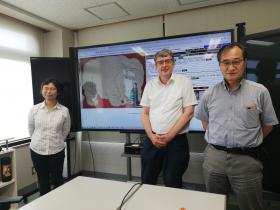 Professor Thomsen, thank you very much for your time today. How did you first connect with the Art Research Center (ARC)?
Professor Thomsen, thank you very much for your time today. How did you first connect with the Art Research Center (ARC)?Prof. Thomsen: I met Professor Akama in Geneva more than a decade ago. Since then, we have embarked on several projects digitizing and cataloging Japanese woodblock prints at the Print Cabinet in Geneva.
Thanks to the efforts of the ARC in digital archiving of these prints, we have held two exhibitions at the Print Cabinet--one on kabuki prints in 2014 and the other on surimono prints that is currently ongoing.
In 2016, the University of Zurich also held a three-day international symposium on katagami in Zurich where several ARC faculty members presented their research.
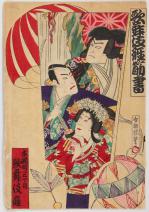 2022年度 ARC-iJACプロジェクト「演劇上演記録データベースを活用した、演劇資料画像検索閲覧システムの構築に関る研究」の一環として7 月 1 日より、歌舞伎座の戦前までの筋書(劇場プ ログラム)について、Web 上で閲覧できるデジタルアーカイブを公開いたしました。
2022年度 ARC-iJACプロジェクト「演劇上演記録データベースを活用した、演劇資料画像検索閲覧システムの構築に関る研究」の一環として7 月 1 日より、歌舞伎座の戦前までの筋書(劇場プ ログラム)について、Web 上で閲覧できるデジタルアーカイブを公開いたしました。デジタルアーカイブ「芝居番付検索閲覧システム」は、 松竹大谷図書館と立命館大学アート・リサーチセンターとの間で結ばれた協定に基づき、 システムの開発及び公開をアート・リサーチセンターが行っています。
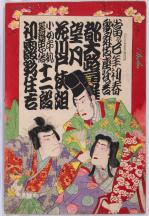 2020年にクラウドファンディングを開始し、戦前の歌舞伎座の演目約1,180冊--通称「筋書」をデジタル化して保存するための資金調達プロジェクトを実地。2年間の準備を経て、この度の公開により、明治22年(1889年)の設立から戦前までの歌舞伎座の筋書をウェブ上で検索・閲覧することが可能になりました。
2020年にクラウドファンディングを開始し、戦前の歌舞伎座の演目約1,180冊--通称「筋書」をデジタル化して保存するための資金調達プロジェクトを実地。2年間の準備を経て、この度の公開により、明治22年(1889年)の設立から戦前までの歌舞伎座の筋書をウェブ上で検索・閲覧することが可能になりました。なお、ARCではARC所蔵番付だけでなく、松竹大谷図書館やその他の所蔵者の番付を同時に検索できる番付ポータルデータベースを公開しています。 こちらでは大谷図書館の筋書公開に合わせてARCが所蔵する戦前までの帝国劇場の筋書を公開しました。
松竹大谷図書館所蔵・芝居番付検索閲覧システムはこちら
ARC番付ポータルデータベースはこちら
問い合わせ先:(公財)松竹大谷図書館 03-5550-1694
7月7日(木)、アート・リサーチセンターの矢野桂司教授が進めている、「京都ニュース」をデジタルアーカイブ化する取り組みが京都新聞に掲載されました。
バーチャル・インスティテュート「京都ニュースアーカイブ」
京都ニュースアーカイブ バーチャル・インスティテュート(6月24日より公開)
< ARC Virtual Institute: 京都ニュースアーカイブ >アート・リサーチセンター(ARC)は「京都ニュースアーカイブ」公開記念シンポジウムを開催いたしました。
立命館大学アート・リサーチセンターは、京都市が制作したニュース映像「京都ニュース」のデジタルアーカイブ化を、2019年から一般社団法人京都映画芸術文化研究所と連携して進めてきました。このたび、一部の作業が完了し、一般公開いたします。
京都ニュースは、1956(昭和31)年から1994(平成6年)頃にかけて京都市が制作したニュース映像です。当時は、京都市内の映画館で本編作品の前にニュース映像として上映されていました。市政ニュース映画としては草創期のものの1つで、そこには、市内の季節の風物、祭りなど多岐にわたる市内のトピックスが記録され、京都市の歴史的な証言としての価値があります。
今回、デジタルアーカイブが完了した資料は、1956(昭和31)年から1972(昭和47)年の間に制作された映像で、当時の事象や風景などが収められています。この度、京都ニュースアーカイブが一部完成し公開されたことを記念して、これまでの研究成果を報告するとともに、地域における映像アーカイブの将来展望について議論するべく、シンポジウムを開催する運びとなりました。参加料は無料です。
是非、ご参加ください。開催日: 7月2日(土)
時 間:14:00 - 16:30
テーマ:「京都ニュースアーカイブ」~時代の光が未来を映す~
会 場: オンラインにて開催
参加方法:
オンライン会場:定員300名
【終了いたしました】ZOOMによるオンライン参加登録はこちら※先着順・定員になり次第締め切り
主催:
立命館大学アート・リサーチセンター
文部科学省国際共同利用・共同研究拠点「日本文化資源デジタル・アーカイブ国際共同研究拠点」(ARC-iJAC)後援:京都市、一般社団法人 京都映画芸術文化研究所
お問い合わせ先:立命館大学アート・リサーチセンター
E-mail: arc-jimu■arc.ritsumei.ac.jp ※■を@に直して、お送りください。
アート・リサーチセンター:https://www.arc.ritsumei.ac.jp/
京都ニュースアーカイブ:https://www.arc.ritsumei.ac.jp/lib/vm/kyotonews/
 13
14
15
16
17
18
19
20
21
22
23
13
14
15
16
17
18
19
20
21
22
23



![[PNG] OSP 2022 Graphic.png](https://www.arc.ritsumei.ac.jp/lib/app/newarc/news/assets_c/2022/07/%5BPNG%5D%20OSP%202022%20Graphic-thumb-480xauto-5058.png)
